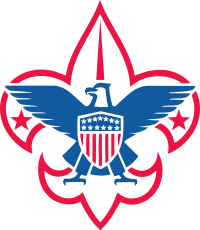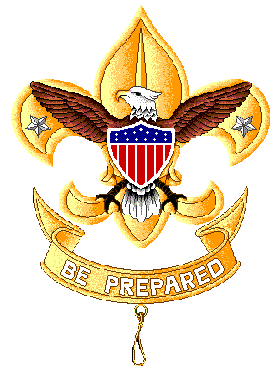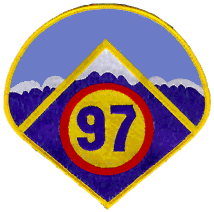 HOME—US Scouting—Scouting America (BSA)
HOME—US Scouting—Scouting America (BSA)
 Scouting America (BSA)
Scouting America (BSA)
Here are the basics about Scouting America:
- Corporate name was changed to Scouting America on 7 May 2024, and became official on the organization's 115th anniversary on 8 February 2025.
- Corporate name was Boy Scouts of America, often abbreviated to BSA, from 1910 through 2024.
- Founded on 8 February 1910, in Washington, DC, by Chicago publisher William Boyce
- Chartered by the US Congress in 1916 (a few other youth programs have congressional charters, including the Civil Air Patrol [1946], Girl Scouts of the USA [1950], Future Farmers of America [1950], the Boys & Girls Clubs of America [1956]
- Headquarters in Irving, Texas (near Dallas)
- Scouting America is the USA's only Scouting organization recognized by the World Organization of the Scout Movement (many countries have several Scouting programs).
- BSA programs are administered through its 200+ local Councils. [By the late 1940's there were over 500 Councils, but there has been a steady trend since then toward consolidation of Councils (complete listing of all BSA Councils)].
- The BSA and its local Councils employ about 2500 full-time professional staff (as of 12/2019).
- Based on the 12/2019 census by the World Organization of the Scout Movement (their most recent census), the BSA is the fourth largest Scouting organization in the world (the largest by far is Indonesia [24.8 million members], then India [3.6 million], the Philippines (2.8 million), and the US [2.7 million]).
- Membership—As of 12/31/2023, total youth membership in both traditional and non-traditional programs was 1.1 million.
- Membership numbers are from the 2023 BSA Annual Report, released in spring 2024 (the first Annual Report since 2019). It follows a trend of ever-skimpier Annual Reports as BSA membership has declined.
- Recent significant membership losses can be attributed to three disastrous events all coinciding:
(1) the decision by the Church of Jesus Christ of Latter-day Saints (LDS or Mormon church) to end their sponsorship of Cub Scout packs and Scout troops effective 12/31/2019 [the church had previously ended their sponsorship of Sea Scoutng & Venturing effective 12/31/2017]; (2) the restrictions caused by the Covid pandemic (restrictions started in 3/2020), with slowly waning restrictions dragging on into 2022; and (3) the BSA bankruptcy resulting from lawsuits related to child abuse (mostly from the 1990's & earlier, before BSA initiated strict youth protection standards for all adults).
Scouting America offers four traditional Scouting programs based on grade or age (Cub Scouts, Scouts, Sea Scouts, & Venturers). As of 12/2019, the Cub Scouts BSA plus Scouts BSA programs account for over 98% of traditional membership.
The BSA also has two non-traditional work- & school-based subsidiaries (Exploring & Learning for Life). As of 12/2023, these programs account for about 8% of total BSA youth participation. Note that the pilot STEM Scouts program has quietly been dropped, although local Councils may still operate a similar local program.
Traditional Programs
Cub Scouts BSA (mostly coed, Kindergarten through grade 5)
- Members in Kindergarten are called Lions or Lion Cub Scouts, and work on the Lion rank. This new program went nationwide as of mid-2018. Note that the new Lion rank is unrelated to the former Cub Scout Lion rank (which used to come after Bear and was discontinued in 1967).
- Members in grade 1 are now called Tigers or Tiger Cub Scouts (formerly Tiger Cubs), and work on the Tiger rank.
- Members in grade 2 are called Wolves or Wolf Cub Scouts, and work on the Wolf rank.
- Members in grade 3 are called Bears or Bear Cub Scouts, and work on the Bear rank.
- Members in grade 4 are called Webelos Scouts, and work on the Webelos rank. [Note that the made-up word Webelos always has the 's'; the term 'Webelo' is incorrect.]
- Members in grade 5 were also called Webelos Scouts, but are shifting to the rank-based name of Arrow of Light (or AOL) Scouts, and work on the Arrow of Light rank.
- Packs can choose to single-gender or coed. Packs with both boys and girls are referred to as "family packs", though a family pack can have both single-gender dens and coed dens.
- As of mid-2023, dens for Lion, Tiger, Wolf, Bear, and 4th grade Webelos can be coed (or male only or female only). Coed dens are referred to as "family dens". Fifth grade ("AOL") dens must be separate gender-specific dens, in preparation for joining a Scout troop (which must also be gender-specific).
- If necessary due to lower membership, packs can have "multi-rank dens", consisting of Cub Scouts working on different ranks.
- Arrow of Light Scouts usually graduate into a Scout troop around February of grade 5.
- The overall Cub Scout program is family-centered, adult-run, and offers minimal camping opportunites.
- Adult leaders can be male or female, over age 21 (age 18-20 for certain assistant positions). The adult leader of the pack is the Cubmaster, and each den is led by an adult Den Leader. Wolf, Bear, and Webelos/AOL dens often also have a Scout as den chief to assist the den leader.
- The only youth leadership position is Denner, rotated monthly among the den members, which consists mostly of helping the Den Leader and making a den report at the monthly pack meeting.
Scouts BSA (boys and girls, age 10/11 until 18)
- This is traditional Scouting, formerly 'Boy Scouting', now with boy troops and girl troops.
- Scouts work on seven ranks: Scout (new rank as of 2016), Tenderfoot, Second Class, First Class, Star, Life, Eagle. Eagle Scouts can also earn Eagle Palms, but these are not ranks.
- [The 'Scout' rank, with significantly expanded requirements, replaced the former 'Scout Badge', which represented the joining requirements and was never a rank.]
- The overall Scout program is mostly youth-led with adults providing guidance and training, and is strongly oriented toward camping and the outdoors.
- At about age 14, a Scout can choose to remain in the troop or transfer to a Sea Scout ship or Venturing crew.
- Scouts age 14 and up have sometimes worn special insignia to show their 'senior' status, but there is no such insignia at present.
- Adult troop leaders can be male or female, over age 21 (age 18-20 for Assistant Scoutmasters). The adult leader of the troop is the Scoutmaster.
- The youth leader of the troop is the elected Senior Patrol Leader, and each patrol is led by an elected youth Patrol Leader.
Sea Scouts BSA (coed, age about 14 until 21)
- Started as Sea Scouting in 1912, it changed its name to Sea Exploring in 1949, then back to Sea Scouting in 1998. It was part of the Venturing program from 1998 to 2016, and now has become an independent program section.
- Besides being able to earn the Eagle award, Sea Scouts have their own advancement program, culminating with the Quartermaster award.
- Adult leaders can be male or female, over age 21. The adult leader is called the Skipper, and adult assistants are called Mates.
- The key youth leader of a Sea Scout ship is the elected Boatswain.
- Sea Scout ships can be male-youth only, female-youth only, or coed.
- Membership—See 'Venturing' below for combined Venturing & Sea Scout numbers (BSA prefers not to report these numbers separately even though Sea Scouts has been a separate program section since 2016). BSA is apparently considering moving Sea Scouting into its non-traditional Exploring program (see below) as an aquatic-focused career path.
- Sea Scout Advancement, Age Requirements, Highest Awards
Venturing BSA (coed, age about 14 until 21)
- Venturing replaced the former Exploring program in 1998; its coed crews focus on six experience areas: Citizenship, Leadership, Fitness, Social, Outdoor, and Service.
- The former career-awareness Exploring program is now part of Learning for Life (see below).
- Besides being able to earn the Eagle award, Venturers have their own awards system, culminating with the Summit Award (which replaced the Venturing Silver Award in 2014).
- BSA's Venturing program is unusual compared to the equivalent programs in most other countries because high-school-aged Americans can choose to remain in a Scout troop all the way to age 18; hence the BSA's Venturing and Sea Scout programs are optional.
- There is no BSA program equivalent to the Rover programs available in some countries (for those over age 21).
- Adult leaders can be male or female, over age 21. The adult leader is called the Venturing Advisor.
- The key youth leader of a Venturing crew is the elected crew President.
- Venturing crews can be male-youth only, female-youth only, or coed.
- Membership—As of 12/31/2023, combined Venturing and Sea Scouting youth membership totaled 14 961. [BSA is still reporting Venturing and Sea Scouting numbers together, and both programs have been in precipitous decline since 2012. Venturing + Sea Scouting represent only 1.5% of membership in BSA's traditional programs.]
- Venturer Advancement, Age Requirements, Highest Awards
Last Revision to This Page: 9 February 2025
Text copyright © 1996-2025 by Troop 97 BSA
BSA logos are copyright © Scouting America

 Scouting America (BSA)
Scouting America (BSA)
